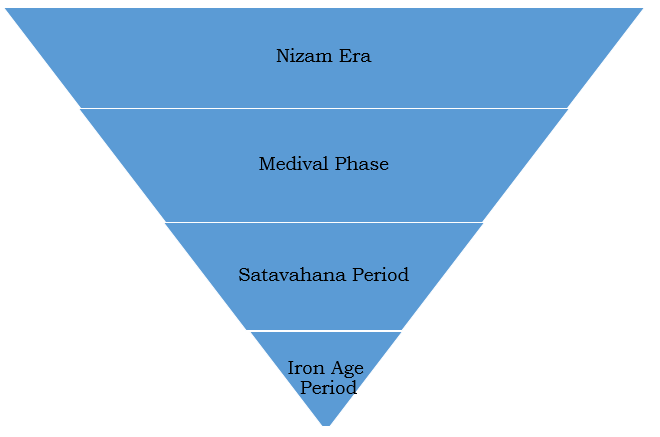7667766266
enquiry@shankarias.in
Prelims - Current events of national and international importance | History of India
Mains (GS-I)- Indian Heritage and Culture
Why in News?
Recently, Nagpur University researchers have unearthed a potentially 3,000-year-old Iron Age civilization in Maharashtra's Yavatmal district.
In archaeology, mounds commonly describe zones of long human settlement, in which soil and rubbish of a cultural nature accumulate over centuries or millennia.

|
1st Cultural Phase - Iron Age |
|
|
2nd Cultural Phase - Satavahana period |
|
|
3rd Cultural Phase - Medieval phase |
|
|
4th Cultural Phase - Nizam period |
|
Reference
Times of India| Discovery of Multi-cultural Settlement in Maharashtra